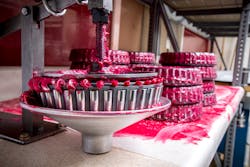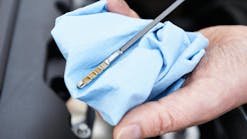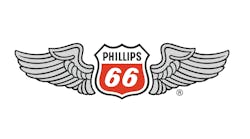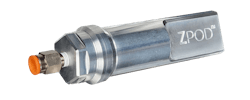How to Maximize Maintenance Efficiency Through Proper Grease Selection
Greases play a vital role in aviation applications. They protect critical components, such as wheel bearings, landing gear bearings, slides and joints from corrosion, extreme temperatures, heavy loads, rain, and rust.
Strict aviation regulations and mandatory OEM approvals help segment grease types by specification and ensure that operators use only greases that are specifically approved for their intended aircraft applications.
However, having common specification approvals does not mean that all greases perform similarly. In fact, typically, they do not. Since greases can have different formulations, it’s no surprise that they do not perform exactly the same.
That’s why choosing the right greases and having the right lubricant partner is a great way for airline operators to help maximize the efficiency and effectiveness of their maintenance programs.
So What is the Right Approach to Grease Selection and Use?
For many operators around the world, a successful grease lubrication approach usually includes the use of a few select greases that deliver proven value and effectiveness to the user.
A common scenario is for an airline operator to use a high-performance, multipurpose grease like Mobilgrease 33, which has a long shelf life, along with a specific application grease like Mobil Aviation Grease SHC 100, in their wheel bearings, due to its bearing rejection rate statistics.
A multipurpose grease is extremely valuable to airlines for several reasons. Even under extreme temperature conditions, as high as 121 C and as low as -73 C, it can deliver outstanding protection against wear and rust and extend the life of bearings and components.
Its proven performance is also documented by its approvals across a wide range of industry and OEM specifications, such as USAF-MIL-PRF-23827, Boeing – BMS 3-33B and Airbus- AIMS 09-06-002, to name a few.
This means that a multipurpose grease can help airline operators consolidate their grease inventories, reduce complexity and minimize the chance of misapplication.
What If I Want to Switch and Upgrade to a Different Grease?
Making sure they have the right grease(s) to optimize aircraft performance is a primary concern of any maintenance team.
To that end, there are several common reasons why operators would choose to perform a grease conversion.
It could be that they are dissatisfied with the performance of their current greases and are seeking a change, or they want to streamline inventory management and use fewer types of grease throughout an aircraft and aircraft fleet.
Or, it could be that the airframe or component OEM has changed its recommended greases for some applications.
The lubricant supplier can help guide operators through the key factors that should be considered when selecting grease, including lubrication requirements, age of equipment, environmental factors and conditions, preferred methods of grease applications and re-greasing intervals.
Grease conversion procedures are well defined by airframe and component OEMs and consist of full purging of all previous grease, sometimes with reduced intervals for the next greasing. During the purging process, the new, replacement grease is used to remove the old grease.
When re-greasing the dispensing pump, the old grease should be wiped off the external parts and the pump should be cycled until the new grease is dispensed from the delivery line.
By following the tips above, operators can help ensure that they are using the right greases and have the right lubrication partner to help maximize the effectiveness of their maintenance programs.
Gary Dudley is global grease product technical advisor for ExxonMobil Research and Engineering. For more information visit www.exxonmobilaviation.com.




